With its rich historical heritage, wine bars and lively squares, Tours is a perfect summary of a certain French art de vivre. So make the most of your camping holiday in Pays-de-la-Loire or Centre-Val-de-Loire and discover this pretty town nestled between the Loire and Cher in the heart of the Valley of the Kings.
The Saint Gatien Cathedral district
It is at the foot of the Saint Gatien cathedral that our walk in the Old Tours begins. Built on the remains of the Roman city of Caesarodunum, this cathedral was named in memory of the first bishop of Tours. The bishops of Tours have often played an important role in the history of France. Especially Saint-Martin. More than 500 villages in France are named after him and his story is told on the walls of many churches. As a Roman soldier, Saint-Martin would have given half of his coat to a poor man suffering from the cold. The following night, Christ would have appeared to him and he became the most illustrious evangelist in the western world. After many peregrinations, he took the reins of the bishopric of Tours. At his death he was the object of a real cult and Tours saw pilgrims from all over Gaul flocking to him. One of his successors, Gregory of Tours, was the author of a History of the Franks which was a mine of information on the poorly documented period of the Merovingian kings. Although the first cathedral was built in the 4th century, it was between the 13th and 16th centuries that the Gothic style of the present cathedral was developed. Adjacent to the cathedral, the Psalette cloister is a very beautiful construction which oscillates between Gothic and Renaissance. You can admire a beautiful spiral staircase which is a miniature replica of the François I staircase of the Blois castle. What once housed the archbishopric of Tours in the 17th and 18th centuries now serves as a showcase for the Fine Arts Museum of Tours. There you can admire works inherited from lost castles (Richelieu, Chanteloup) as well as from the great abbeys of Tours. The museum’s masterpieces are two paintings by Andréa Mantegna from the altarpiece in the church of San Zeno Maggiore in Verona, brought back by Napoleon on his return from his campaigns in Italy.
- Tours Cathedral. Tours, Pays de la Loire, France
- Inside the Cathedral of Tours ©V. Treney – CRT Centre-Val de Loire
The castle of Tours
On the other side of the cathedral, facing the bridge that the Tourangeaux people call the “Pont de Fil”, stand two towers. These are the only remains of the Château de Tours, a powerful medieval fortress built by Philippe le Hardi at the end of the 13th century. This quadrilateral-shaped castle had a high tower at each of its corners. The two towers are therefore all that remains of it. The higher of the two was raised in the 15th century. It is named Tours de Guise in memory of the son of the Duke of Guise who was imprisoned there for three years. Between the two towers, the Logis de Mars, rebuilt at the end of the 18th century, now houses a Museum of Modern Art.
Saint Julien church district
We continue our walk through the streets of Tours to the church of Saint-Julien. Founded in the 6th century by Gregory of Tours, this abbey was home to the relics of Saint Julien. Partially destroyed by a hurricane in the 13th century, it mixes Romanesque and Gothic styles. In the former monastery buildings of the abbey, you can nowadays visit the Touraine Wine Museum and the Compagnonnage Museum. This museum looks back on a long tradition of excellence among French craftsmen who used to take them on a tour of France in order to perfect their art before presenting their masterpiece to an assembly which awarded them the title of Compagnon du Tour de France (Companion of the Tour de France). This museum, unique of its kind, offers a complete panorama of the history of the Compagnonnage. Strolling through the streets surrounding the church of Saint-Julien, you can see the house of the “Pucelle Armée” at 39 rue Colbert. It is said to have been the home of the man who made Joan of Arc’s armour. Before going into Old Tours, we do not fail to go and admire the Wilson Bridge which spans the Loire. It is the oldest bridge in Tours. The Tourangeaux (Tours inhabitants) nicknamed it the “Pont de Pierre”.
- ©D. Darrault – CRT Centre-Val de Loire
- ©D. Darrault – CRT Centre-Val de Loire
- ©D. Darrault – CRT Centre-Val de Loire
- ©D. Darrault – CRT Centre-Val de Loire
- ©C. Mouton – CRT Centre-Val de Loire
Around the Place Plumereau in Tours
After a few steps in the Old Tours, you can admire the superb Italian Renaissance façade of the Gouin Hotel. Just next door stands the CCCOD of Tours, the Centre de Création Contemporaine Olivier Debré (Contemporary Creation Centre Olivier Debré), a showcase for contemporary art exhibitions. We finally arrive at Plumereau Square. The real heart of the city, this square is a former crossroads. It is lined with beautiful half-timbered houses from the 15th and 16th centuries. The sculptures that decorate the facades bear witness to the extraordinary liveliness that animated this square in the Middle Ages. It is the ideal place to take a break and have a drink. It is indeed one of the high points of Tours’ life as soon as the sunny days allow the terraces. Just a stone’s throw from Place Plumereau stands the former basilica of Saint-Martin. As early as the 5th century, pilgrims came from all over Gaul to visit the tomb of Saint Martin. This basilica remained an important religious centre until the end of the Middle Ages. Unfortunately, it was partially razed to the ground during the French Revolution. Only the Charlemagne Tower and the Clock Tower remain of the original building. To get an idea of what the basilica was like, you can go to 3 de la rue Rapin where a museum is dedicated to the former basilica. In the courtyard of a neighbouring private building (5 rue Descartes) you will find its cloister, a small jewel of the Touraine Renaissance.
- Plumereau Square in Tours ©C. Mouton – CRT Centre-Val de Loire
- Hôtel Gouin and CCCOD – B. Moriceau – CRT Centre-Val de Loire
- Modern art exhibition at CCCOD C. Mouton – CRT Centre-Val de Loire
- Basilica of St. Martin in Tours – France
The Chateauneuf district
It is pleasant to stroll around Place Plumereau. By taking the rue des cerisiers, the rue de la rôtisserie, the rue de la serpe, the place du grand-marché or the rue du change, we discover streets lined with half-timbered houses whose names are full of history and tell the story of life in Tours in the past. This district was known as the Chateauneuf district, a neighbourhood with its own fortifications. For several centuries Tours was indeed a double city with two poles of attraction which were the basilica and the cathedral. It wasn’t until the 14th century that a single rampart united the two districts to form the old town centre of Tours.
Jean Jaurès Square in Tours
We leave the former Chateauneuf to reach the Place Jean Jaurès. The latter houses the imposing Law Courts and Town Hall. The latter was designed by the Tourangeau architect Victor Laloux, to whom we owe the famous Orsay Train Station in Paris. Behind the Town Hall, every Wednesday and Saturday, Boulevard Bérangère hosts one of the oldest flower markets, a magnificent mix of scents and colours. A few steps from the Place Jean Jaurès, we leave the historic Tours for a Tours that already has a foot in the future. Opposite the elegant 19th century railway station stands the Vinci congress centre, designed by the architect Jean Nouvel. Faced with this building with its resolutely modern forms, one cannot help wondering what a stroll through the “Vieux Tours” will look like in a hundred years’ time.
- City Hall of Tours ©E. Mangeat – CRT Centre-Val de Loire
- Congress Center designed by french architect Jean Nouvel©P.Forget – CRT Centre-Val de Loire
Our campsites in Tours or in the surrounding area
A selection of campsites for caravans, tents and motorhomes in Tours or near Tours.



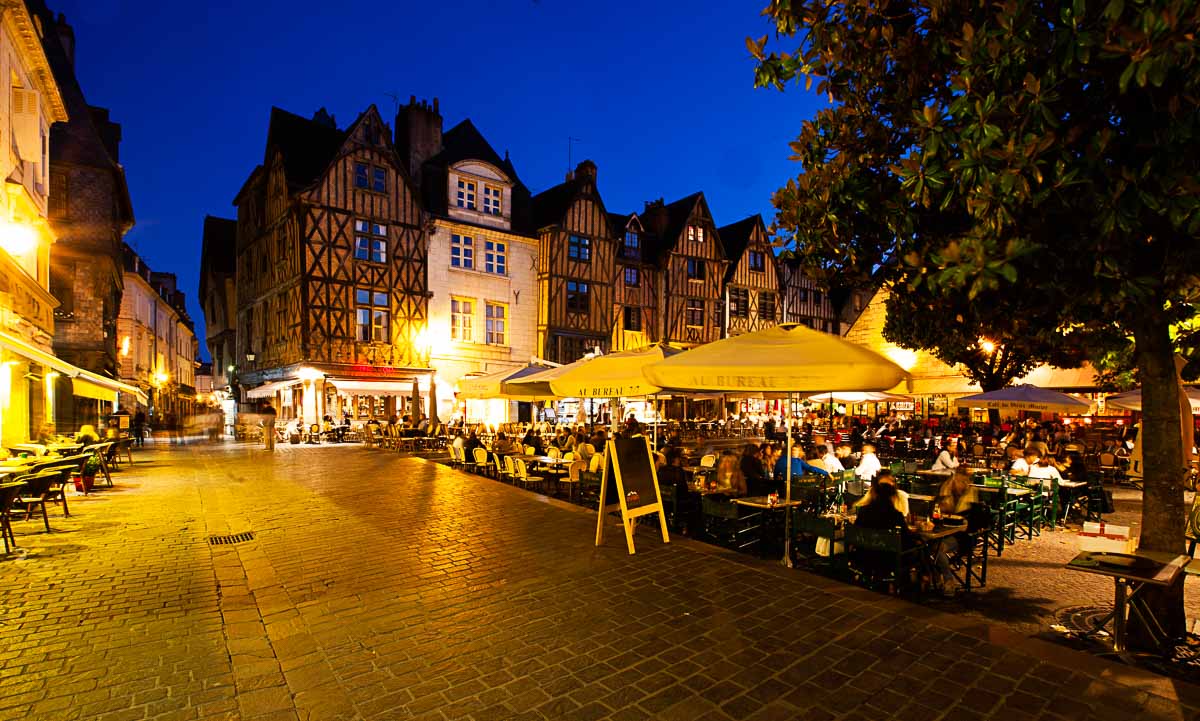
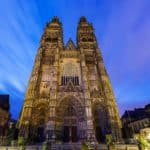
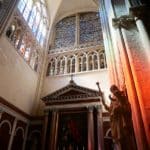

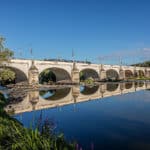

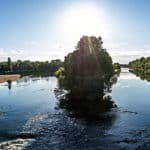
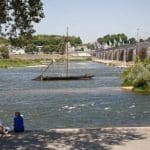
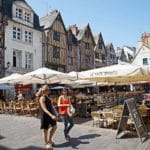
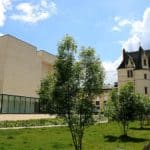

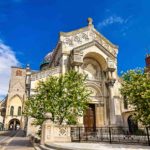

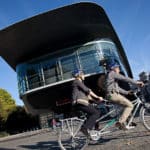

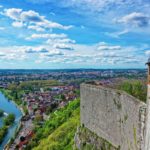
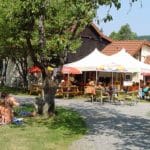
Leave a Reply